The Attempt on Reagan, Revisited
Rarely-seen amateur photos of the attempted assassination of President Reagan emerge; iconic photos endure.
“Smile for the birdie!” Al Fury shouted to the crowd, unaware of who he was photographing outside the Washington Hilton Hotel, March 30, 1981.1
Can you spot the would-be assassin? John Hinckley, Jr. is the one not smiling.
Fury, the Hilton’s head of security, had set up a rope line to wrangle the crowd just before President Reagan’s departure. Soon after Fury took this photo, Hinckley would fire six shots in 1.7 seconds, nearly killing the President and gravely wounding three others.
Ron Edmonds, a photographer for the Associated Press, was facing President Reagan when shots rang out. “I saw him grimace, and that’s when I pushed the shutter down, and I held it down,” Edmonds told TIME in 2011.
Edmonds’ photos of the attempt are usually tightly-cropped, but the full-frame versions are more revealing, more informative, and, unexpectedly, more artful.
Secret Service agent Tim McCarthy can be seen at far right, just before taking a bullet to the chest for the president.
Reagan was pushed into the presidential limousine, a 1972 Lincoln Continental, by Secret Service agent Jerry Parr. Get this: Parr was inspired to become an agent after seeing the movie Code of the Secret Service, starring, you guessed it…Ronald Reagan.
Edmonds had the wherewithal to turn his camera, a Nikon F3 with a 50, vertically, capturing all three of Hinckley’s victims — McCarthy, police officer Thomas Delahanty, and White House Press Secretary James Brady. Look at Delahanty’s hat standing on edge — pure chaos.
This photo by Edmonds has also been widely-published. The Secret Service agent holding the Uzi is Robert Wanko.
Side note: In 2021, Wanko’s family commissioned artist Leigh Brown to paint a portrait based on Edmonds’ photo to give to him as a Christmas gift. It’s glorious.
Edmonds’ photos dominated newspaper front pages the following day.
Edmonds also owned the mags, more or less. TIME’s decision to run Birney Lettick’s rendering of Edmonds’ photo was…a choice. Big swing and a miss. Newsweek isn’t much better — the mezzotint cutout doesn’t do Edmonds’ photo justice.
Clearly, U.S. News & World Report won the week, publishing Edmonds’ sequence on top of a color photo by White House photographer Michael Evans (more on him below).
Edmonds went on to win a World Press Photo award and the Pulitzer Prize — UPI’s Don Rypka was a runner-up. Rypka’s photo of James Brady face down on the ground next to a handgun is startling.
After the shooting, Rypka ran to the closest pay phone — which was being used — and snatched the phone away from the caller to alert the desk what had happened. The UPI editor who answered the call thought it was an early April Fool’s Day joke.2
Dirck Halstead was the pool photographer and shot color. “I've been present now at three assassination attempts,” Halstead told CNN in 2001. “First, there is disbelief that what is happening is happening. And then, time slows down.”
Al Fury can be seen in the dark suit on the left, seemingly staring in disbelief.
Michael Evans was the official White House photographer trailing Reagan that day. Evans’ photo of Reagan waving to the crowd just before Hinckley opened fire is haunting, foreboding.
Remember the umbrella in Fury’s photo? Hinckley is just to the left, obscured by Delahanty. McCarthy is on the right, in the blue suit, and Brady is the bald man behind Reagan.
Evans’ contact sheet, part of the White House Photo Collection in the Ronald Reagan Presidential Library & Museum, is fascinating. The harsh transition from superficial grip and grins to an assassination attempt is surreal.
Look closely at frame 23…see the photographer on the right? That’s none other than the legendary Sebastião Salgado.
Of all the photographers outside the Hilton that day, Salgado was the most surprising. In 1981, he was a Magnum nominee on assignment for The New York Times Magazine, documenting Reagan in his first one hundred days in office. Dressed in an ill-fitting grey suit — borrowed at the last minute from fellow Magnum photographer Erich Hartmann — Salgado made an unparalleled series of photos worth revisiting.3
Salgado has Reagan’s wave, Capa-sharp.
These are not traditional contact sheets. According to Salgado’s studio, these are copy photos created from a set of prints mysteriously obtained by the FBI, now part of the Ronald Reagan Presidential Library & Museum.
“I got a picture of the president being pushed into the car and Jim Brady lying on the ground and the security guards jumping on Hinckley,” Salgado recalled. “I shot seventy-six pictures in the minute that it was happening and when it was all over I felt a little bit lost because all of the security men had gone and I thought, ‘How do I get back to the White House, I don’t even have the address?’”4
Back to Al Fury’s photo…
The three tv cameramen pictured behind the rope line next to Hinckley were in a perfect, but dangerous, position to document the attempt. Under the umbrella holding a blue RCA TK-76, is Shelly Fielman with NBC. Fielman, a legend in the White House press corps, was the only cameraman to capture Hinckley firing his gun and getting tackled by Secret Service agent Dennis McCarthy (:05).
Next to Fielman is CBS News cameraman Charlie Wilson. “I kept thinking, ‘God don't let this tape run out,’” he told CBS in 2006. White House photographer Michael Evans can be seen just beyond the President when Hinckley starts shooting.
ABC’s Hank Brown was tight on the President, then quickly zoomed out when the shooting started. “I thought, I had to preserve history,” Brown told CNN in 2013. “It brought tears to my eyes. I still see Brady lying here. I still think about Delahanty. I see his face. I still see McCarthy being lifted up off the ground and being thrown back by the bullet.”5
Brown’s footage beat the other networks to air. I vividly remember my third-grade teaching rolling a tv into the classroom to watch the news. It was Hank Brown’s.
Despite all this iconic imagery, two amateur photos that I recently discovered in the Ronald Reagan Presidential Library archives captivate me the most — maybe because so little is known about them.
The first, taken by John Greenland, is the only photo that shows both Reagan and Hinckley in the same frame — technically imperfect, still incredible.
I’ve been unable to figure out anything about Greenland, other than he was visiting from Boston and he was on the witness list in Hinckley’s trial.
Then there’s this gem. While TIME may have flubbed their cover, they managed to publish what I consider to be one of the more captivating and unique photos made that day — taken by an onlooker named Sam La Fata.
La Fata’s photo was shot with a 110 camera at the moment Jerry Parr pushed Reagan into the limo and Tim McCarthy turned to shield the President. La Fata’s contact sheet in the Reagan Library archives. That’s all I know.
I closely examined Micheal Evans’ photos taken during the chaotic aftermath, looking for someone holding a 110 camera near the spot La Fata took his photo. I believe this is him in the blue coat standing next to, of all people, Sebastião Salgado.
Megyn Kelly, “How Did the Ronald Reagan Assassination Attempt Actually Take Place, with Former FBI Agent Tom Baker,” The Megyn Kelly Show, December 19, 2022.
Simon Druker, “Former UPI photographer and Pulitzer Prize finalist Don Rypka dies at 73,” UPI, February 24, 2023.
Russell Miller, Magnum: Fifty Years at the Front Line of History (New York: Grove Press, 1997), 253.
Ibid., 255.


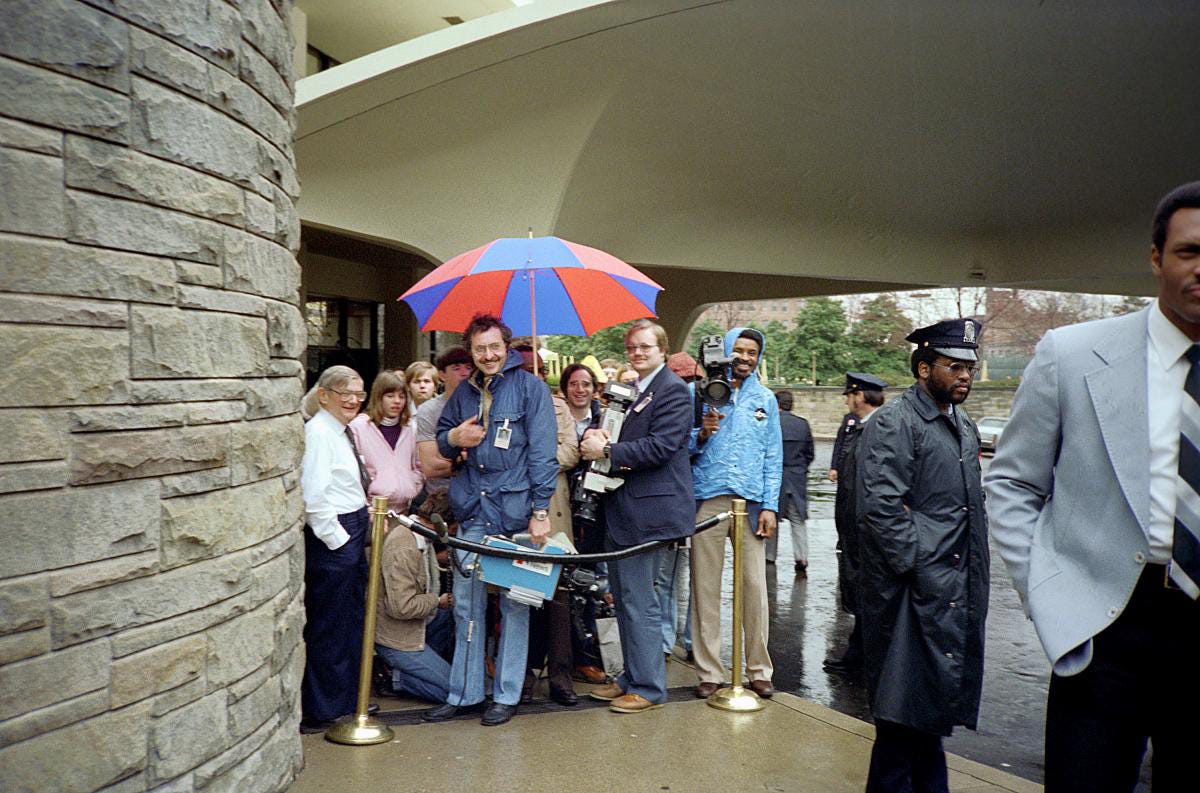
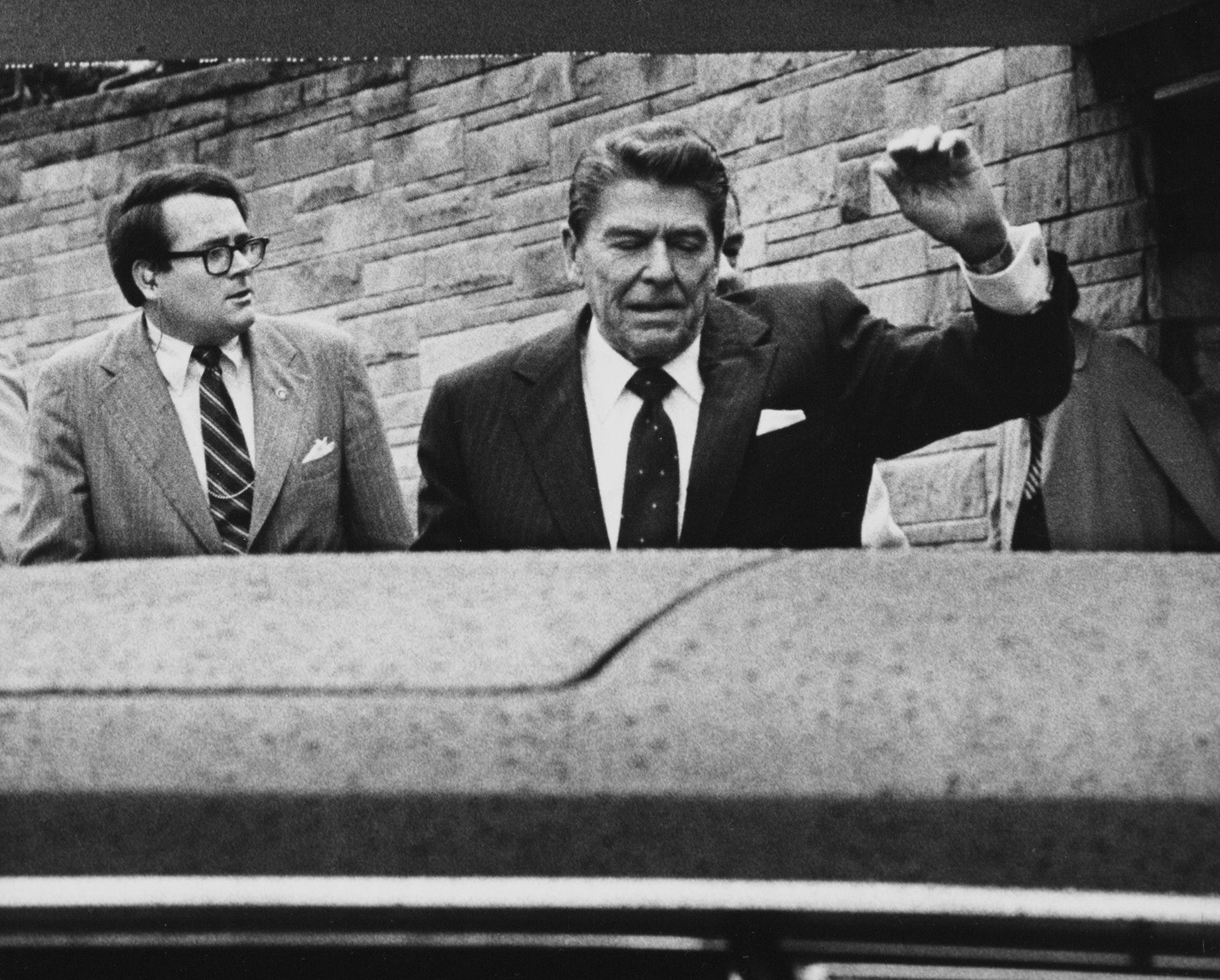
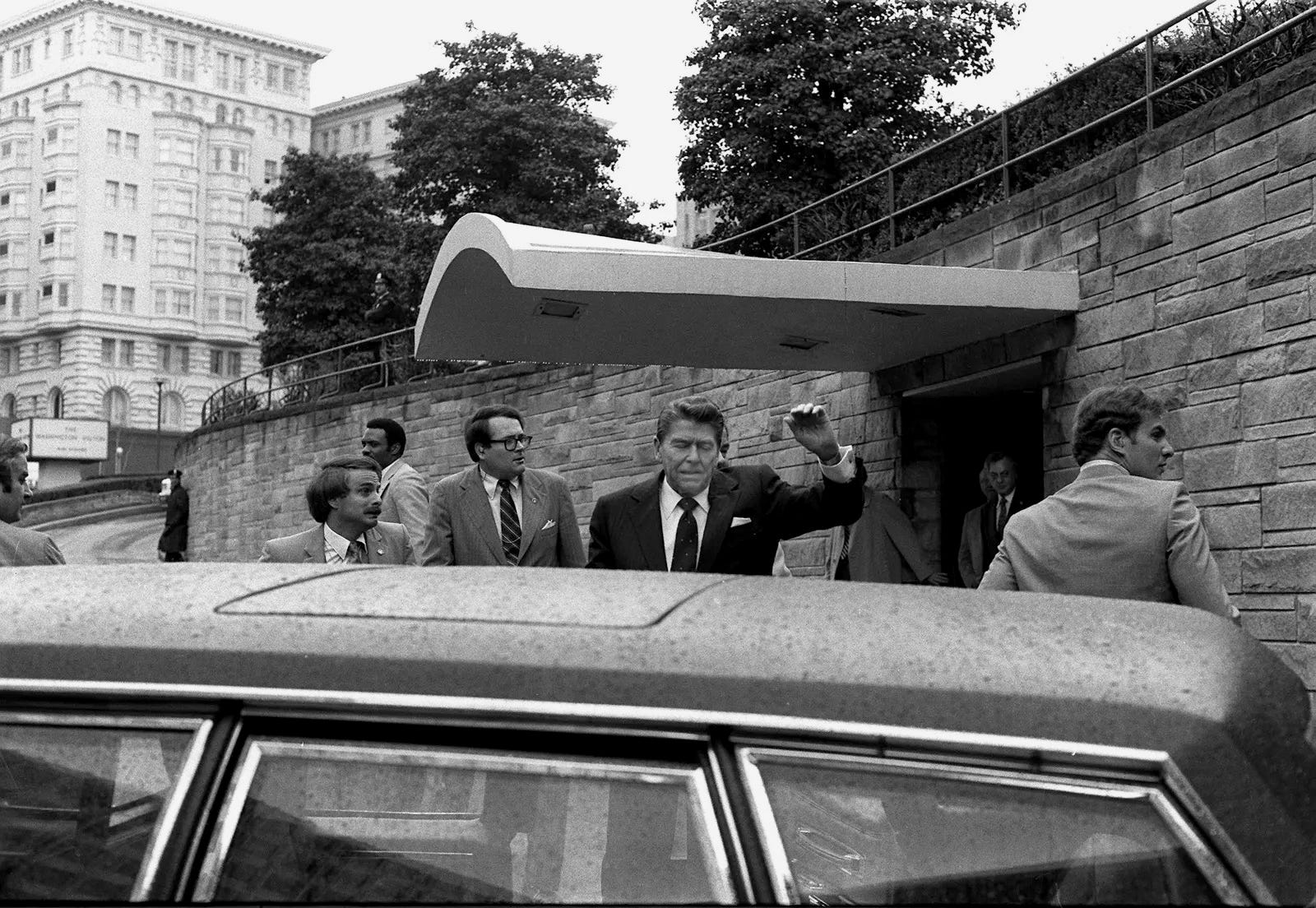

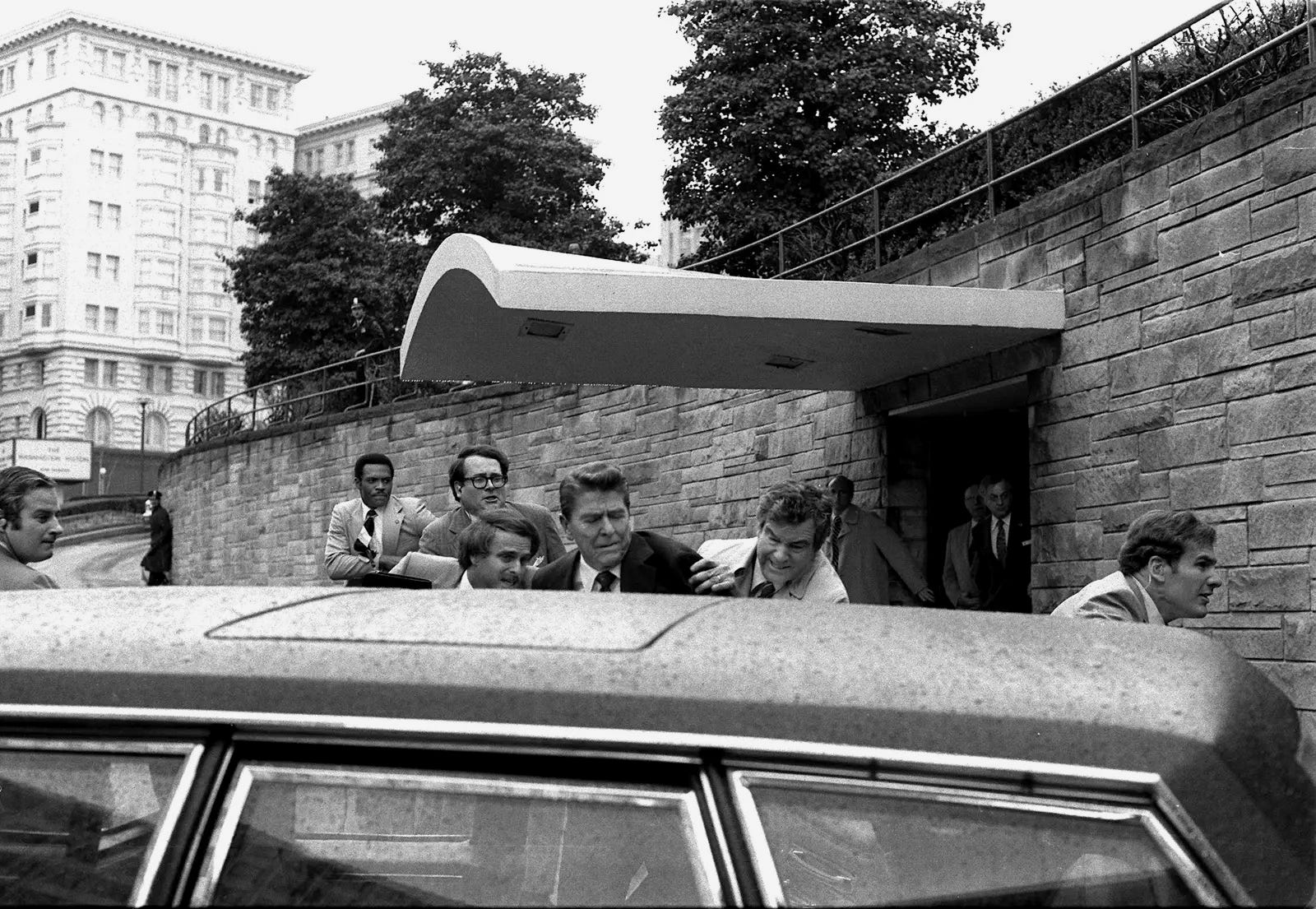
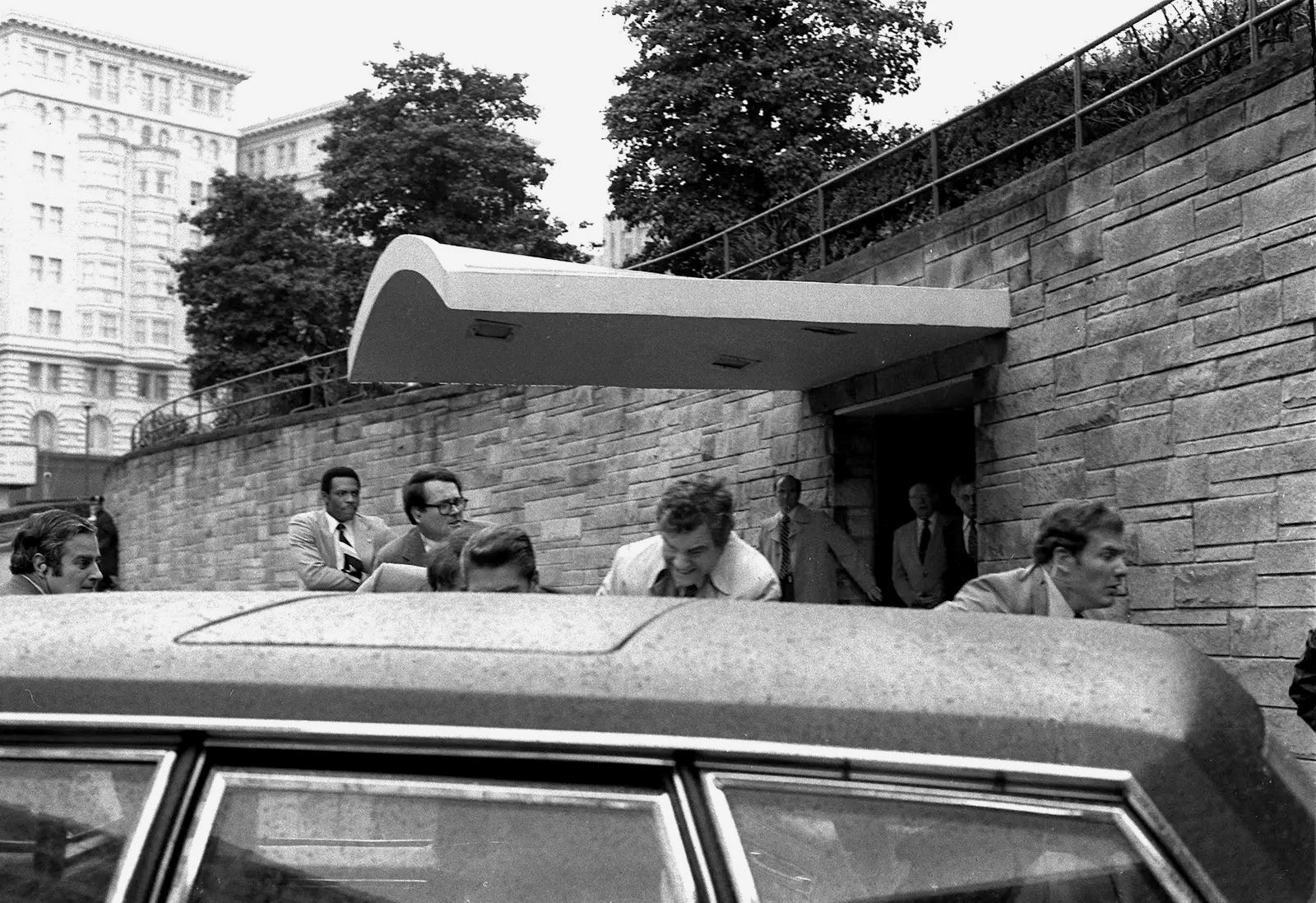
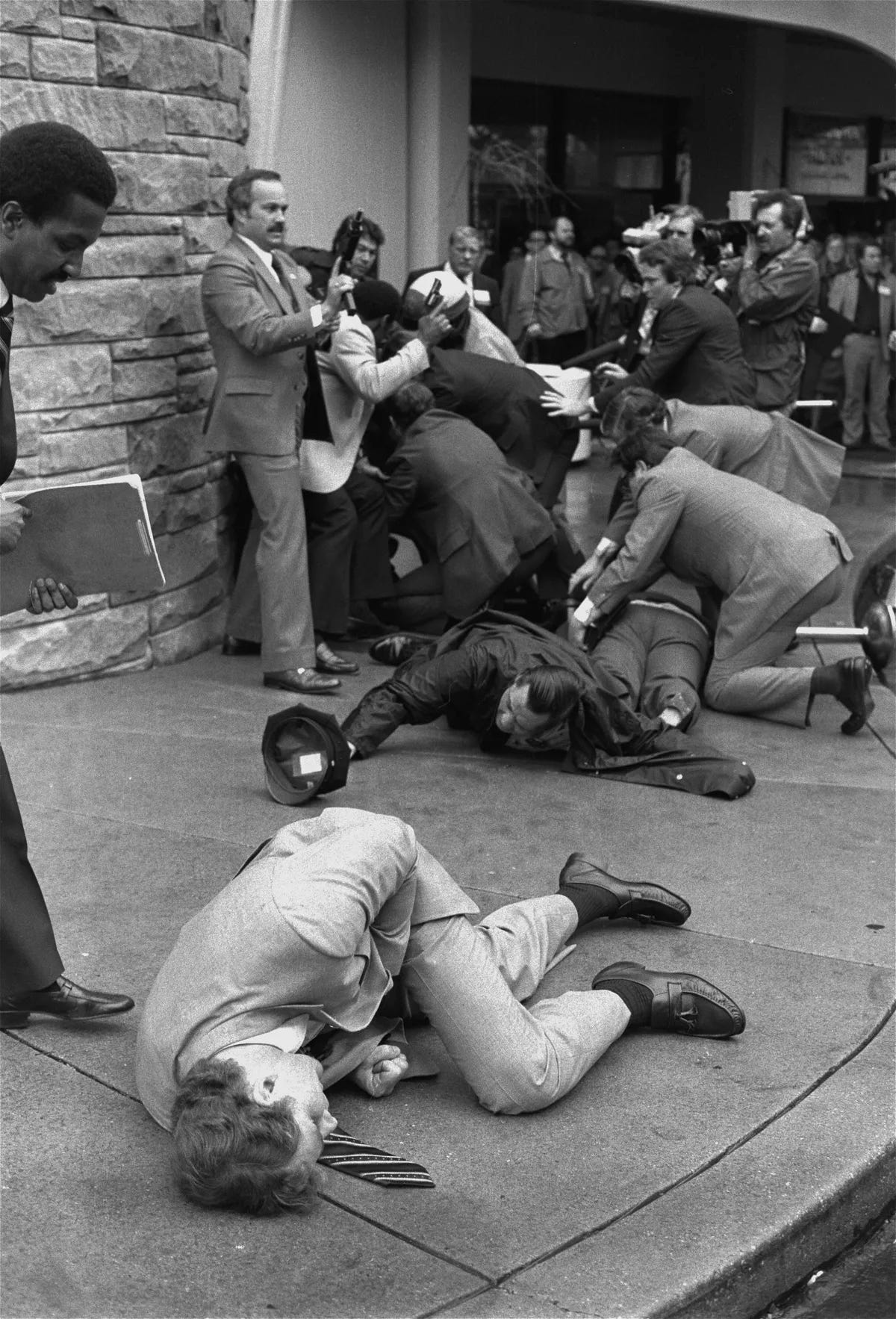

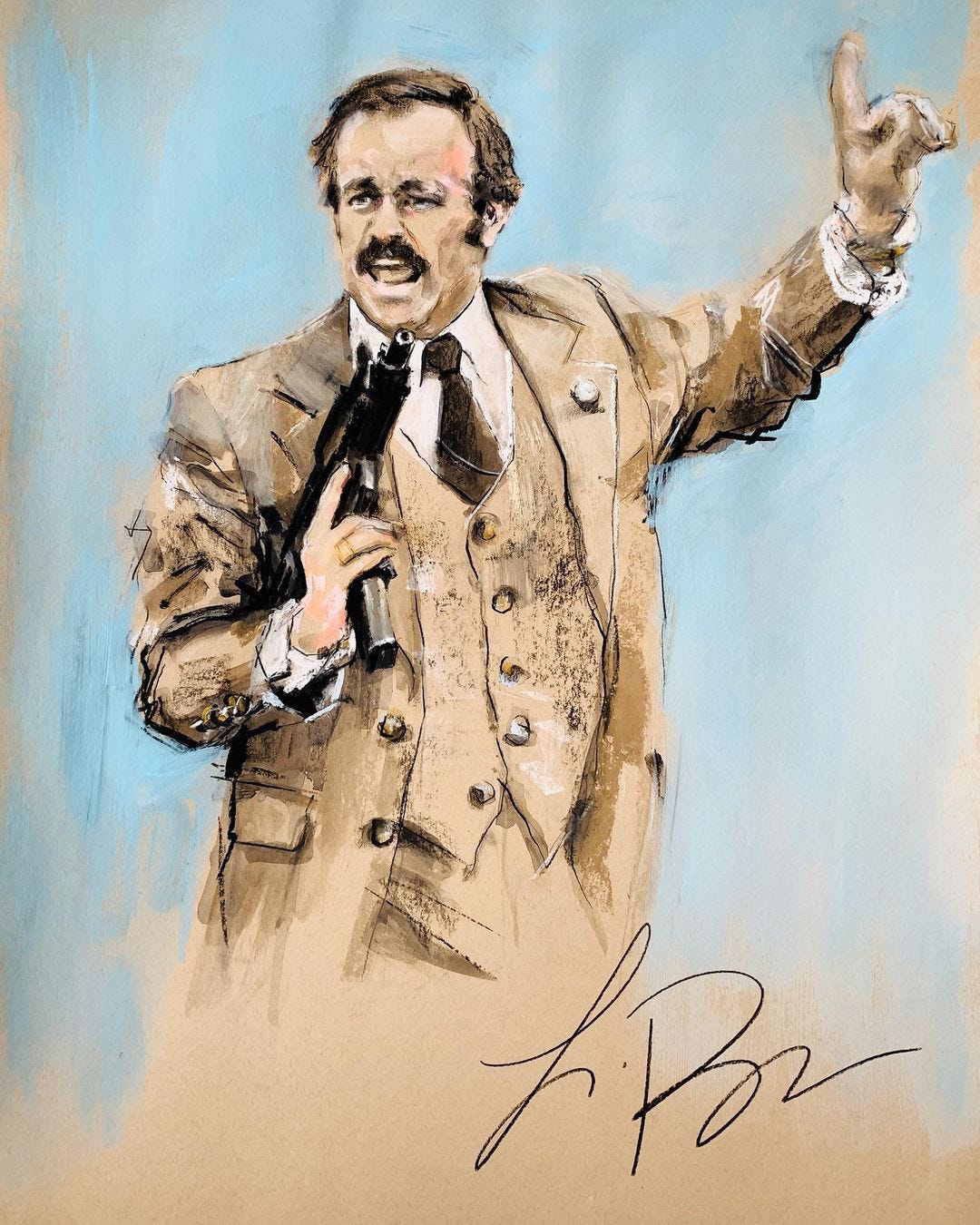



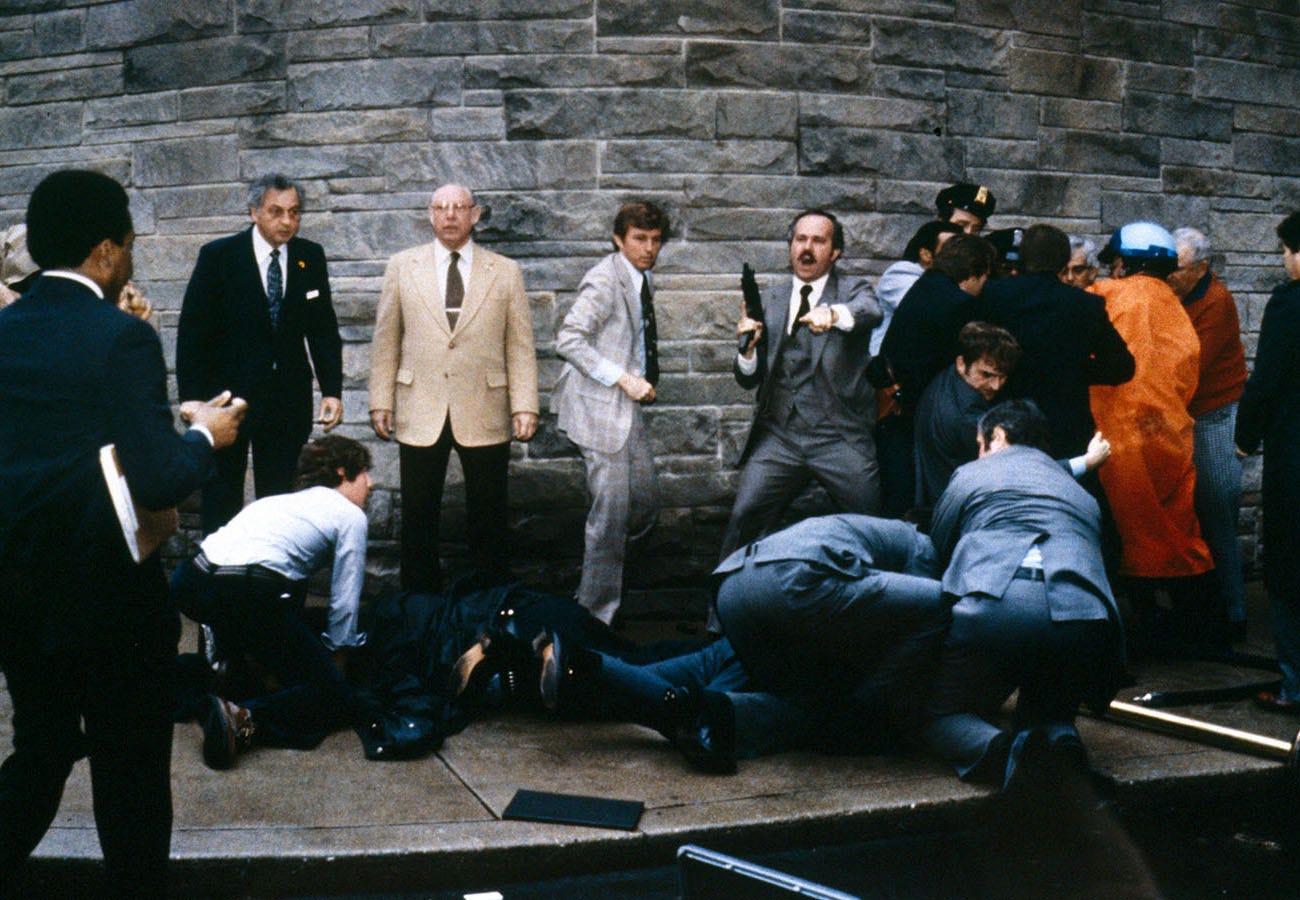
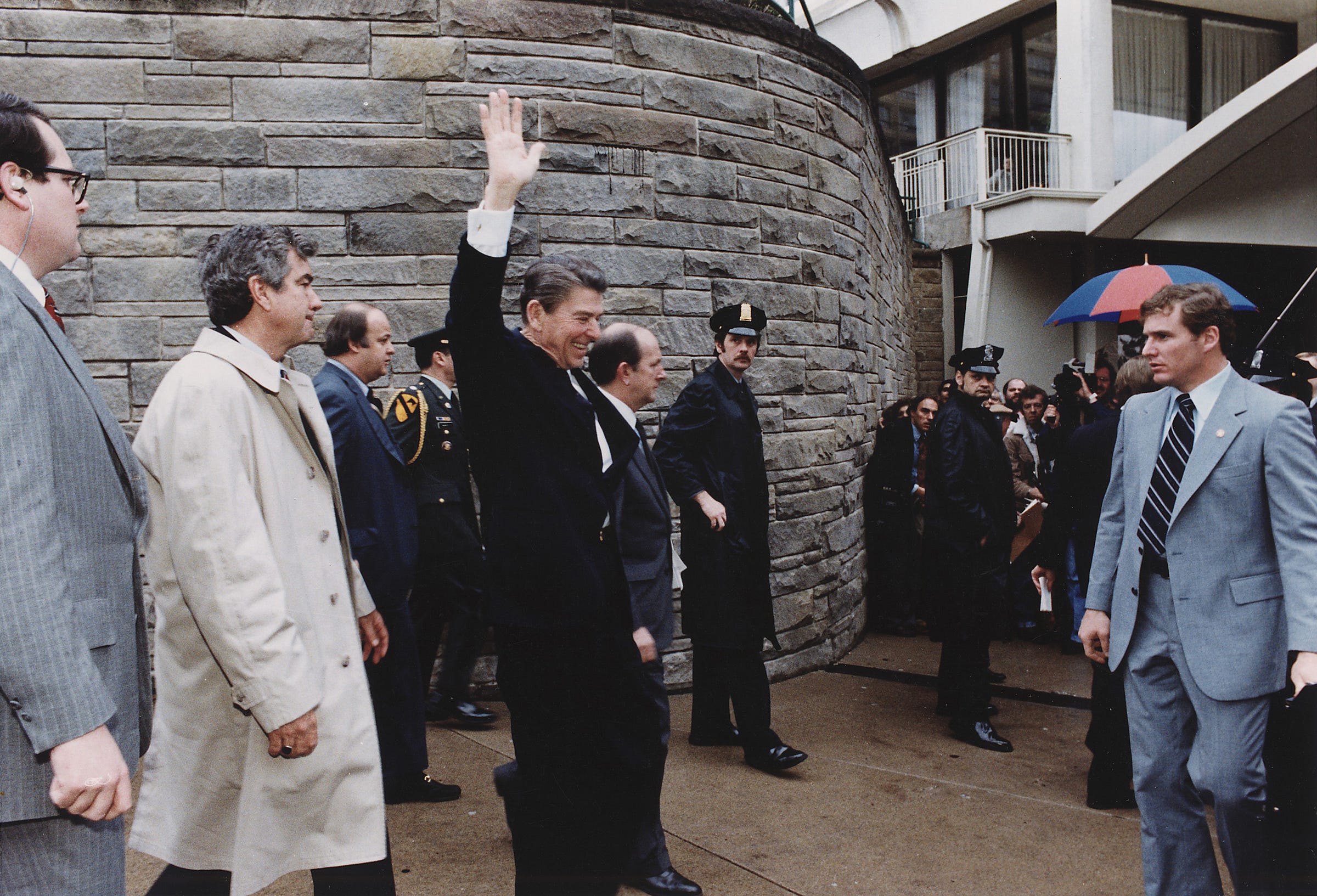
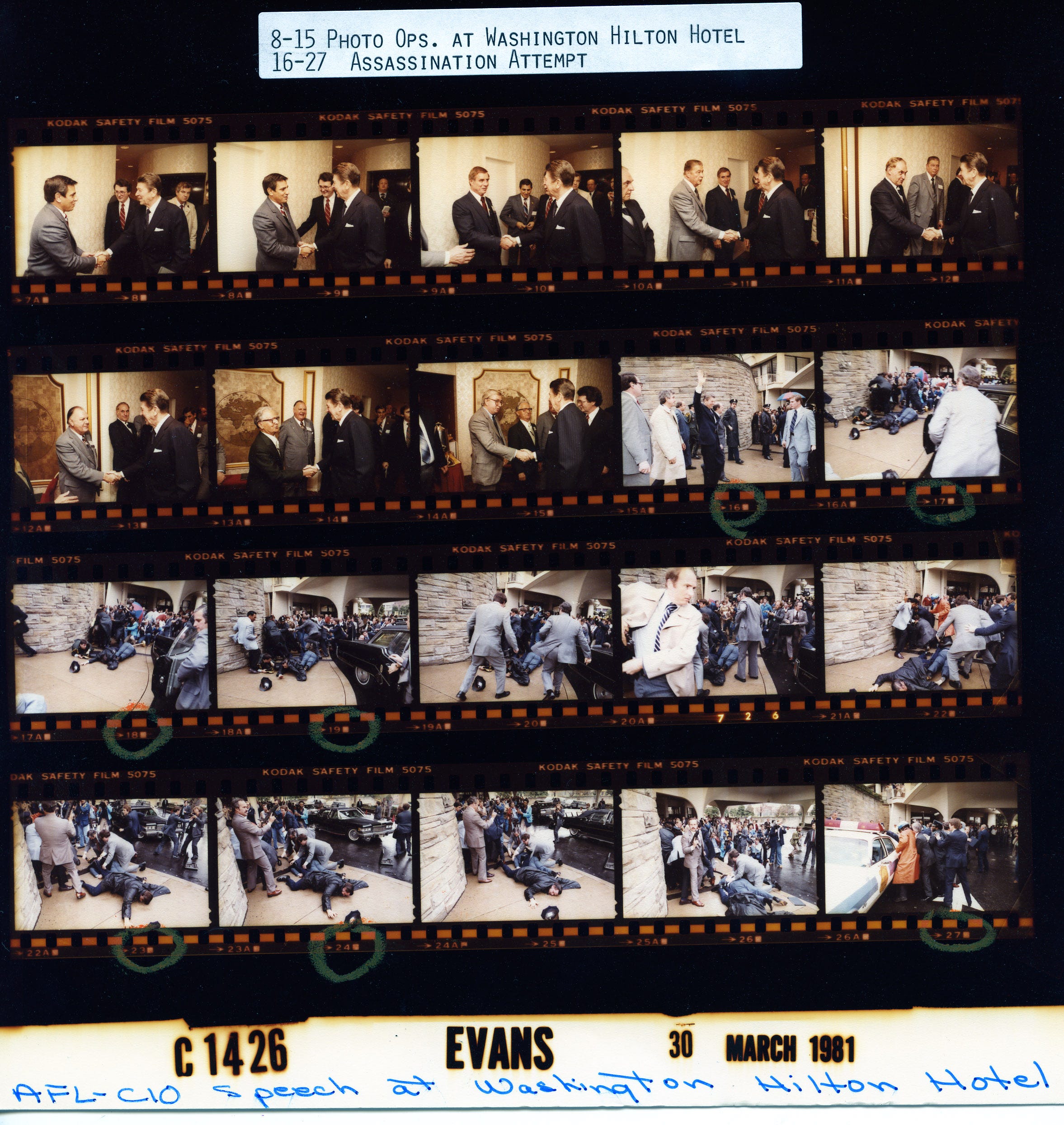
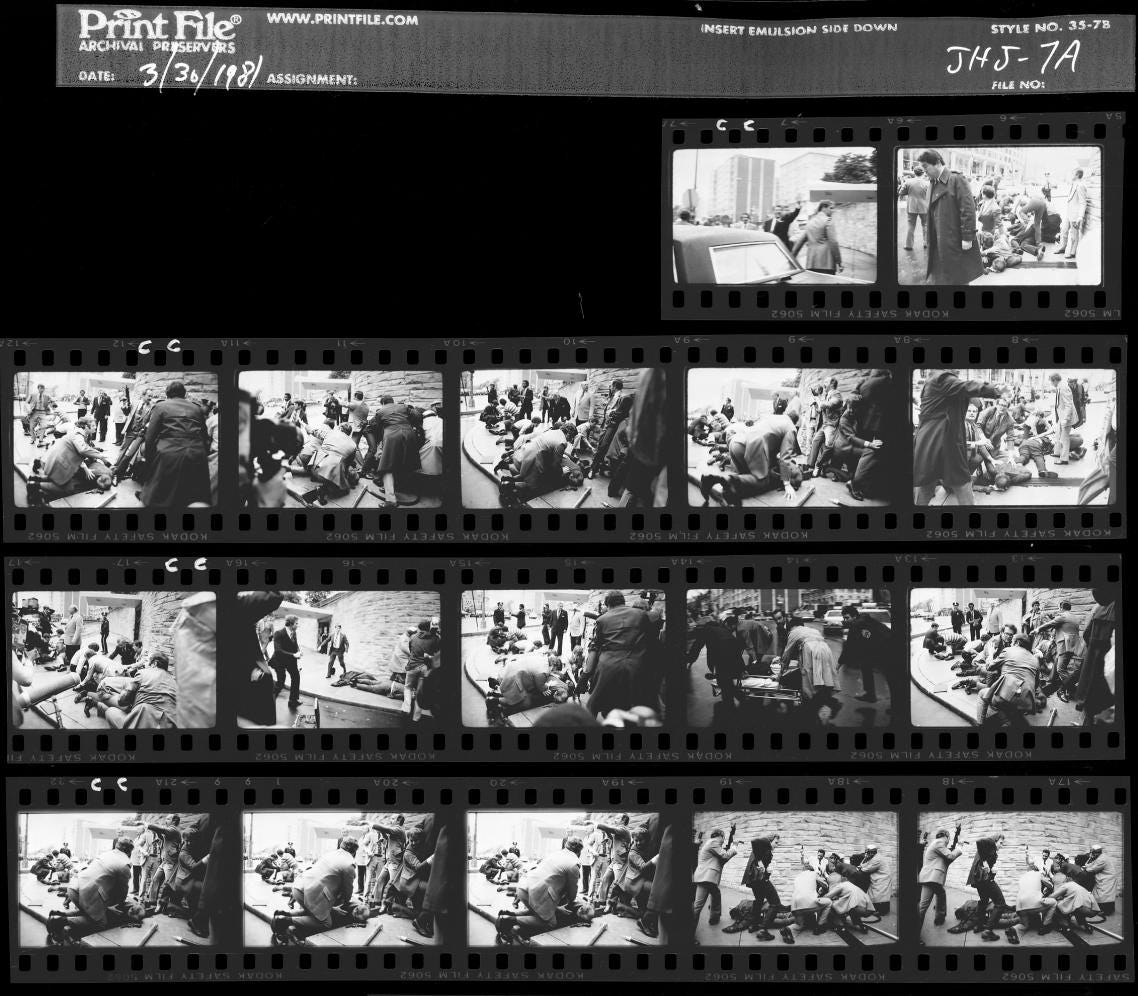
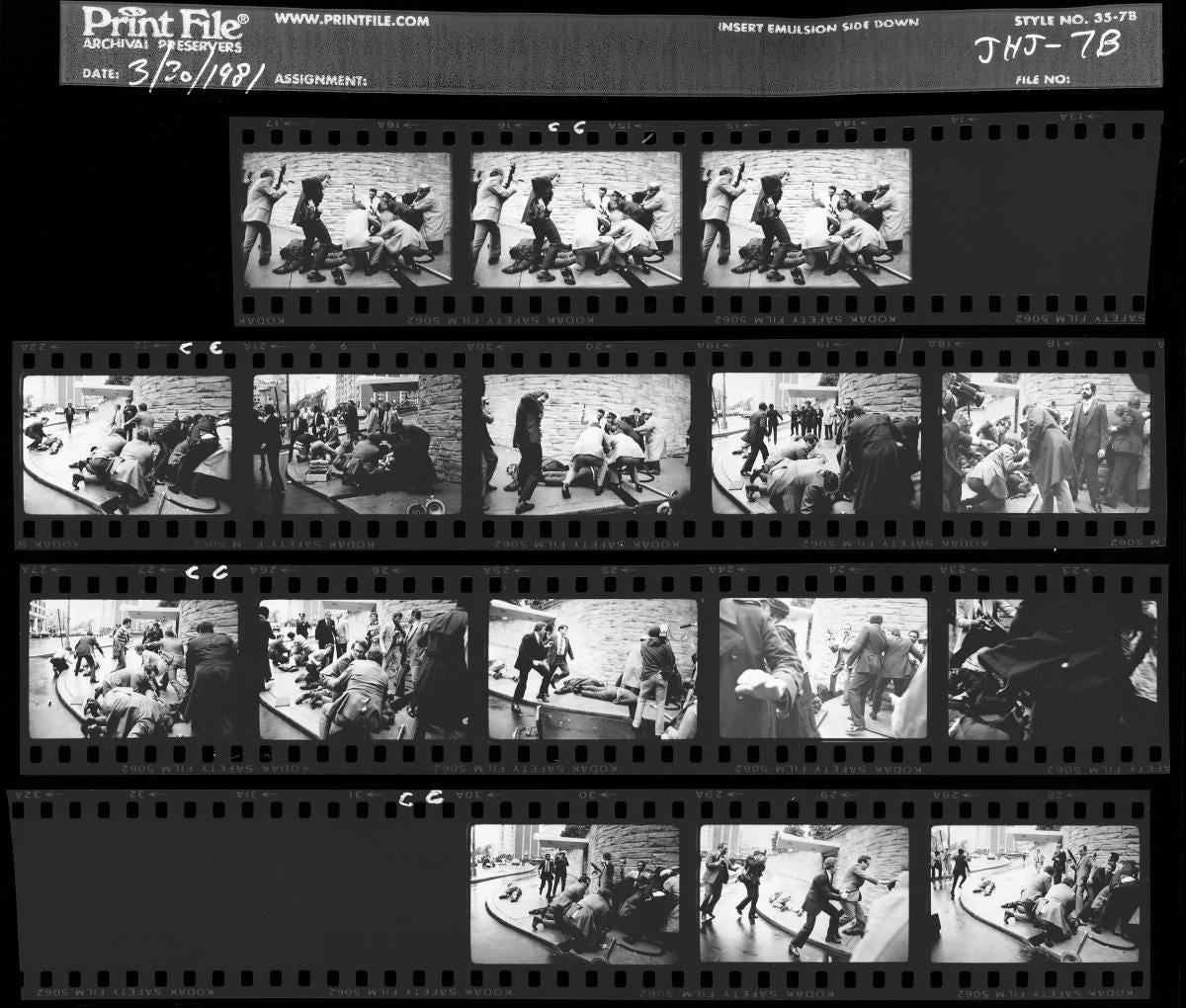
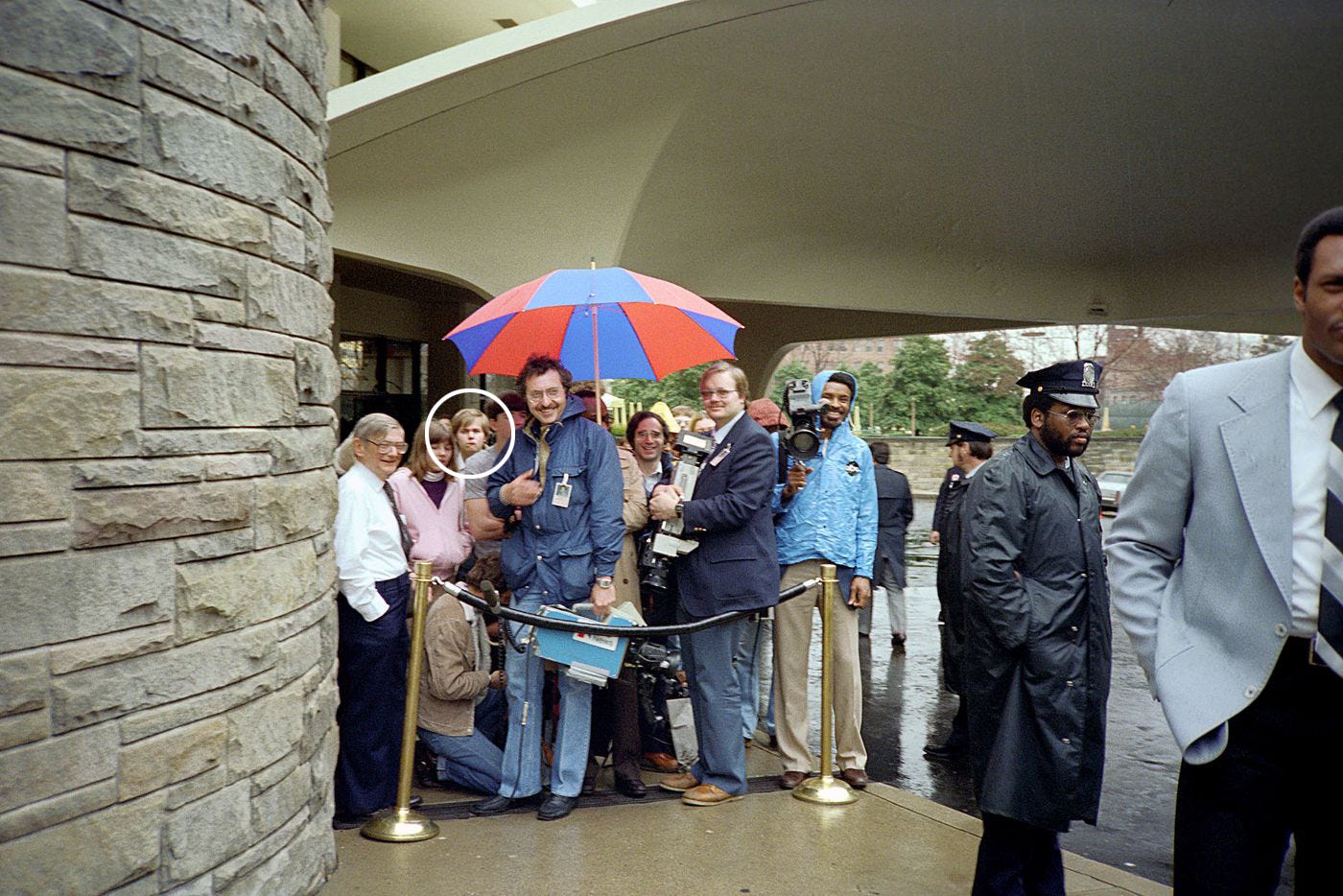
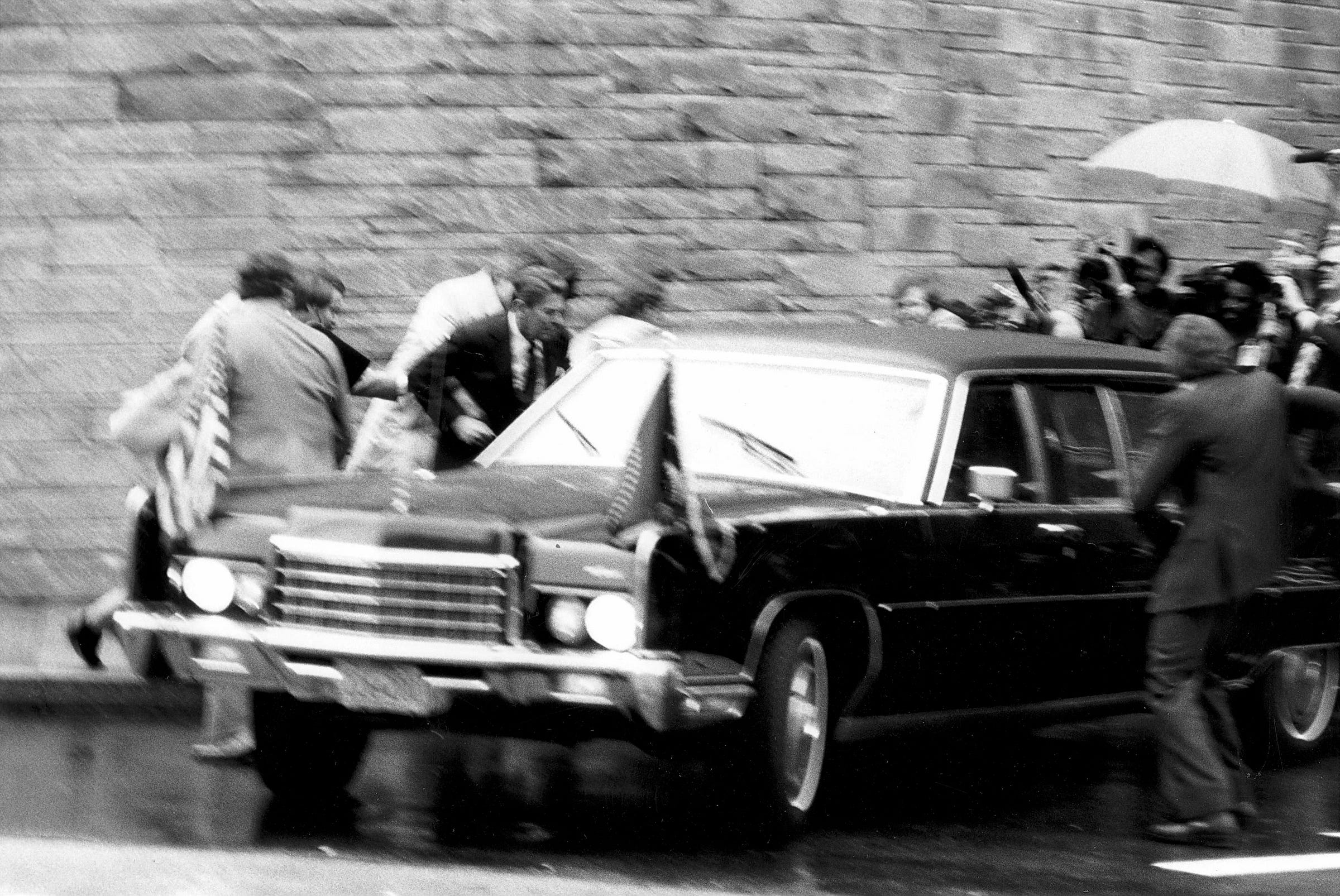
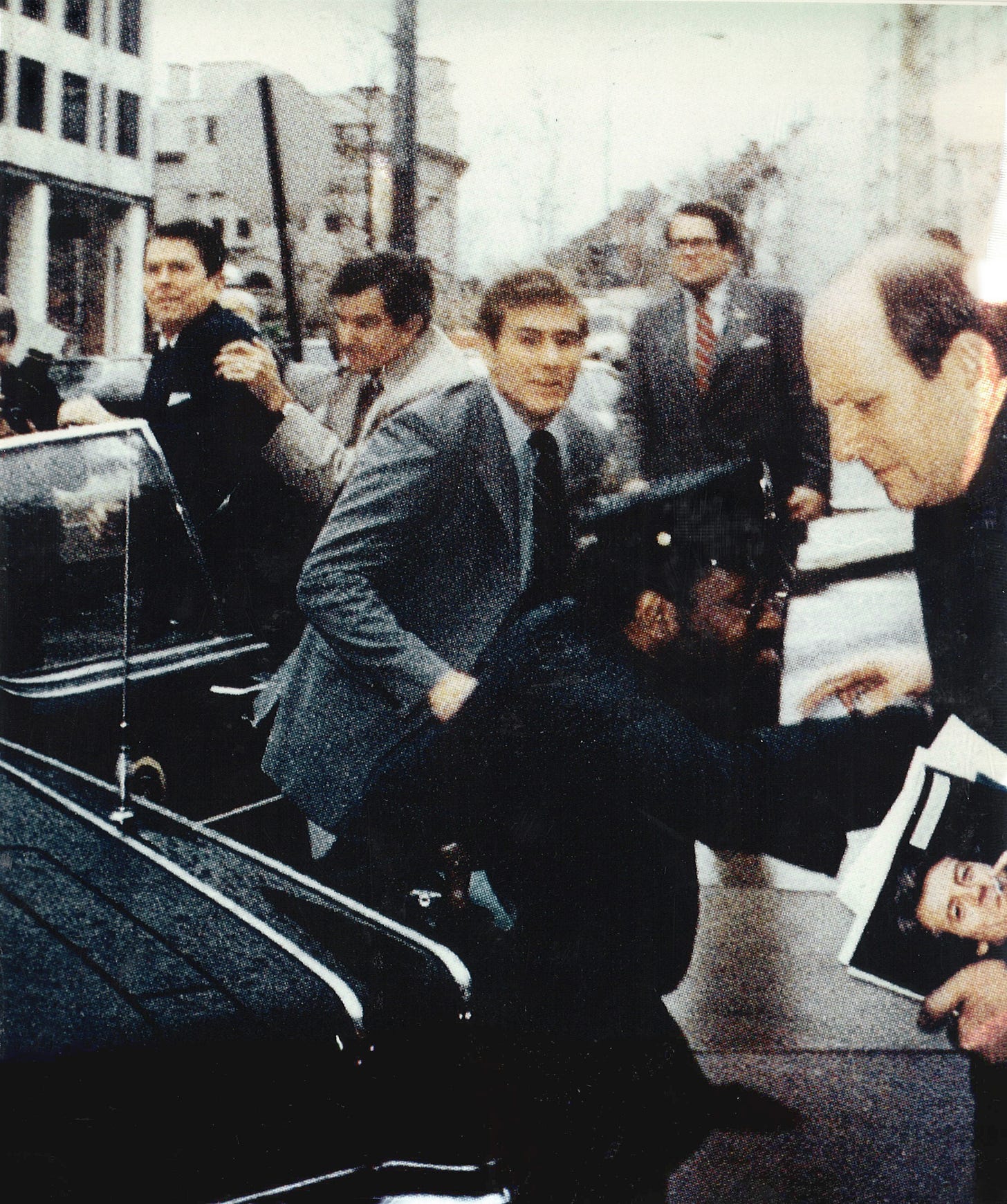
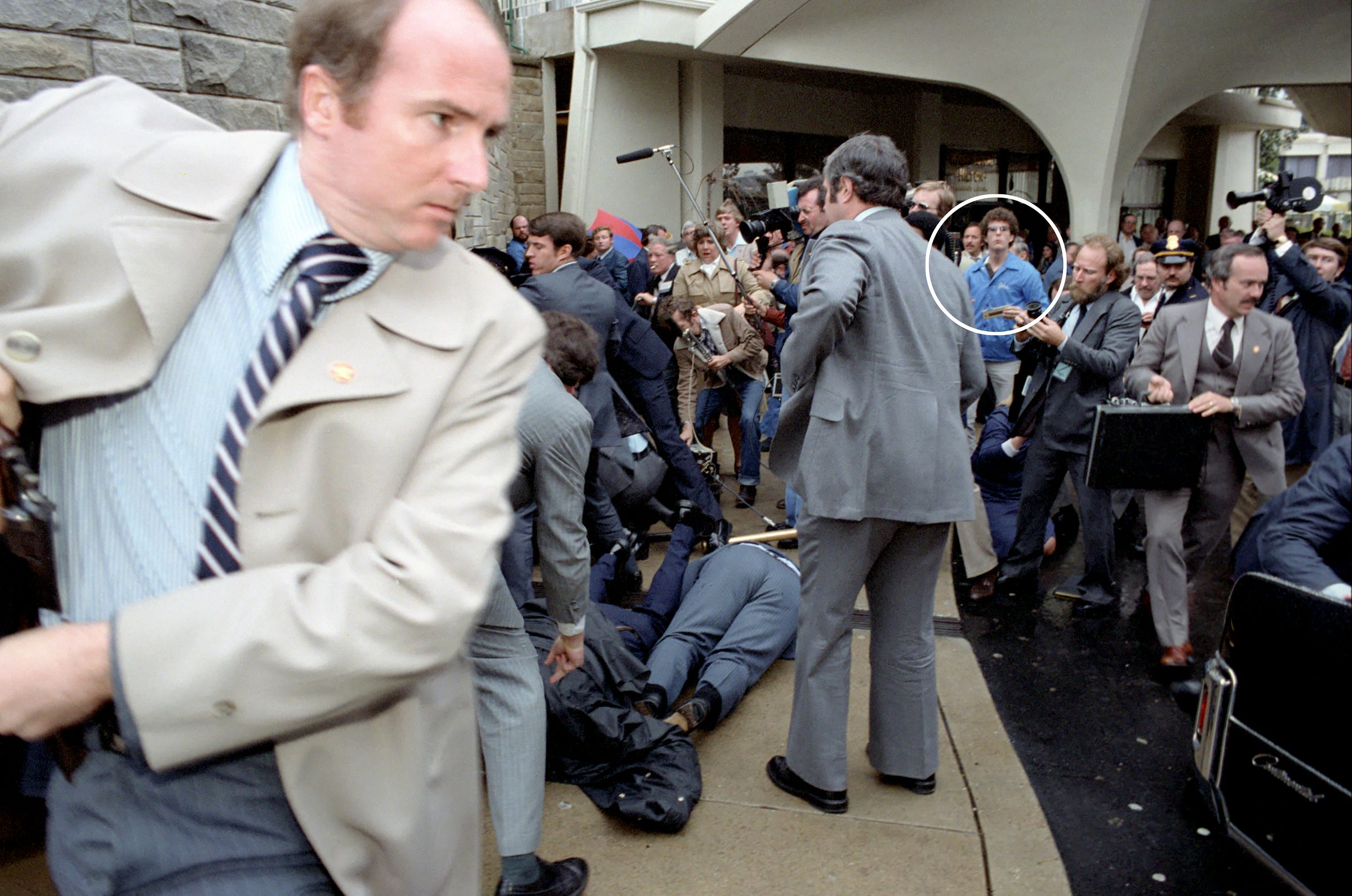

Keep an eye out for the sound guy, with the boom mic. It was his first day on the job - he’s in shock, expressionless.
What caught my eye was near the end of the CBS tape, there’s a man casually finishing his cigarette as chaos unfolds before him!